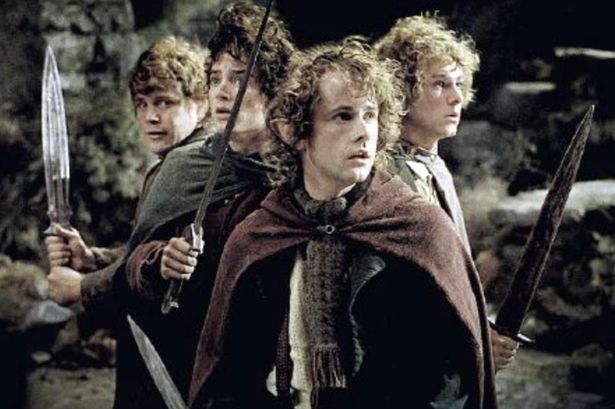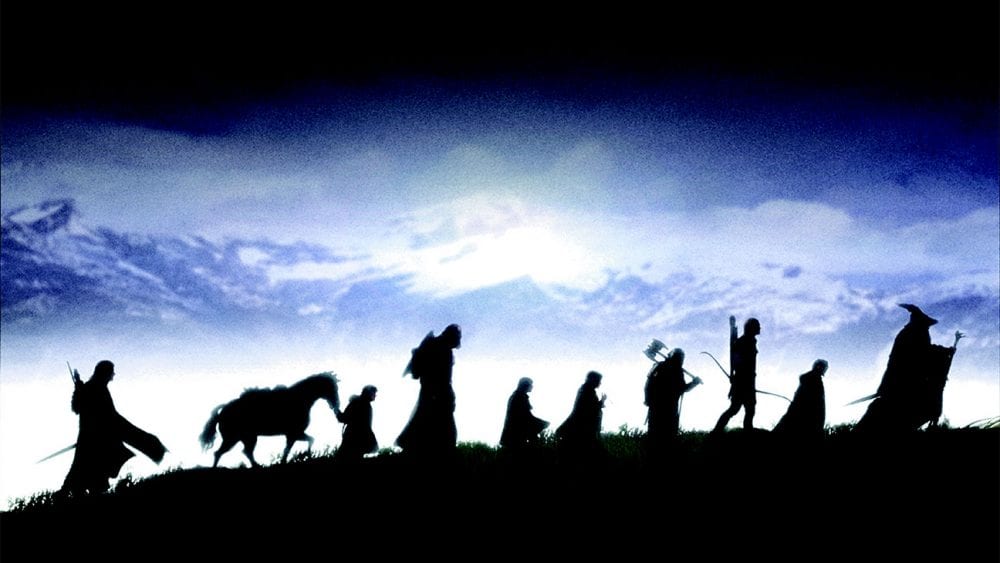The Lord of the Rings novels have spawned a truly beloved multimedia franchise over the decades. From Peter Jackson’s awe-inspiring film adaptations, acclaimed video games such as Shadow of Mordor, to even the upcoming Rings of Power television show from Amazon, there are a variety of ways fans have and will continue to be drawn to J.R.R. Tolkien’s seminal fantasy universe. This past Saturday at Fan Expo Boston attendees excitedly gathered in large lines to acquire autographs and photos from the four Fellowship hobbit actors, as well as witness them reunite, showcasing how impactful the series’ characters are.
Just one day prior, the Fan Expo Boston panel titled, “Lord of the Rings Psychology: A Change of Hobbit ” looked at just what has made Tolkien’s characters, represented on both page and screen, so resonant with fans. The panel was moderated by Dr. J. Scott Jordan who was joined by fellow psychologists and Lord of the Rings fans Dr. Kellie Wallace, Dr. Yoni Sobin, Dr. Travis Langley who first recalled their favorite Lord of the Rings memories.
Dr. Langley’s favorite memory was watching the extended editions of the first two movies right before the third film came out with his kids and their friends. As a distinguished professor of psychology, he was able to take them on campus to watch the films with a big projector in an attempt to recreate the cinematic experience. “[I was] getting to be the cool dad over something so doggone nerdy,” he said to the laughter of the audience.
Afterward the panelists then each chose their favorite character/s and discussed them through the lens of their expertise. Though first talking about Sam, Dr. Sobin additionally took some time to talk about Gollum/Smeagol. As someone who has had experience with individuals struggling with substance use, he thinks the character, and his relationship with the ring is an excellent representation of the ambivalence that people often feel when they’re using substances but also want to stop using them at the same time.
Dr. Wallace added, “Smeagol finds a ring and it’s beautiful, and then it has power over him. It wasn’t his intention to be consumed by it. It wasn’t his intention to let it ruin his life. But it happened, and [with] a lot of folks who struggle with addiction that’s exactly how it started. It just happens because there’s a lot of biological components that come with that.” She also mentioned that an aspect of Gollum is that he’s alone and that a lot of people that struggle with addiction feel isolated and alone, but it’s with social support, help, and treatment that people can kick these addictions.
Before kicking things over to a Q&A with the audience Dr. Jordan gave his panelists some compelling questions based on the fate of the Fellowship at the end of the series – Are Fellowships doomed to fail? Could they have stayed together?
“Maybe it’s supposed to dissolve,” said Dr. Wallace. “You have the memories and that shared experience in which, trauma or not, [is] always going to bind you and keep you together. Maybe that’s a success.”
It was a joy to see the love stemming from the panelists and audience at “Lord of the Rings Psychology: A Change of Hobbit.” The end of Return of the King may have marked the end of a Fellowship but, judging by the passion exuded this weekend, fans will always have a close relationship and gain inspiration from Tolkien’s characters allowing for the Fellowship of Fandom for Lord of the Rings to always live on.
Want the latest convention coverage from The Beat? You can find it here!









